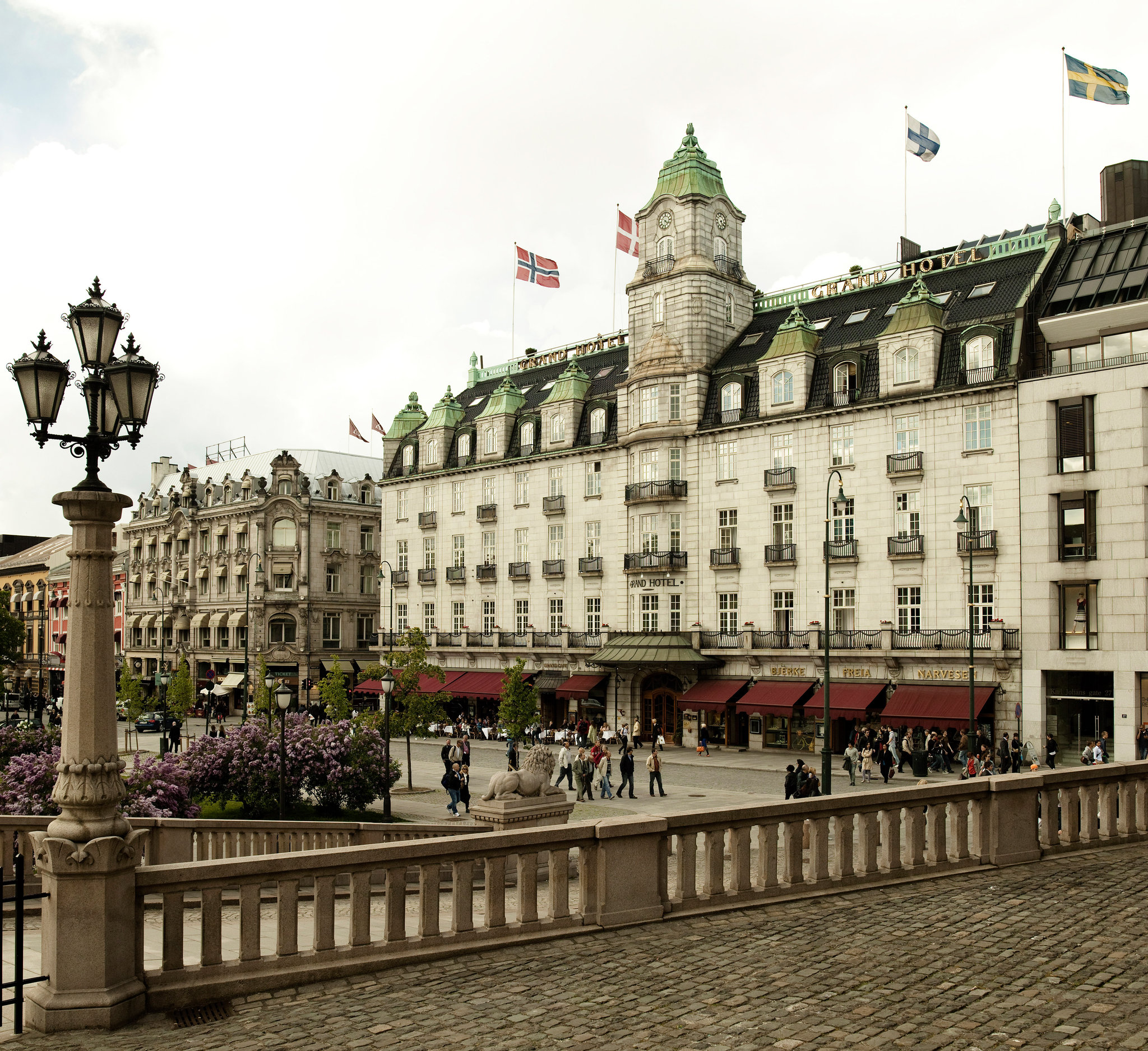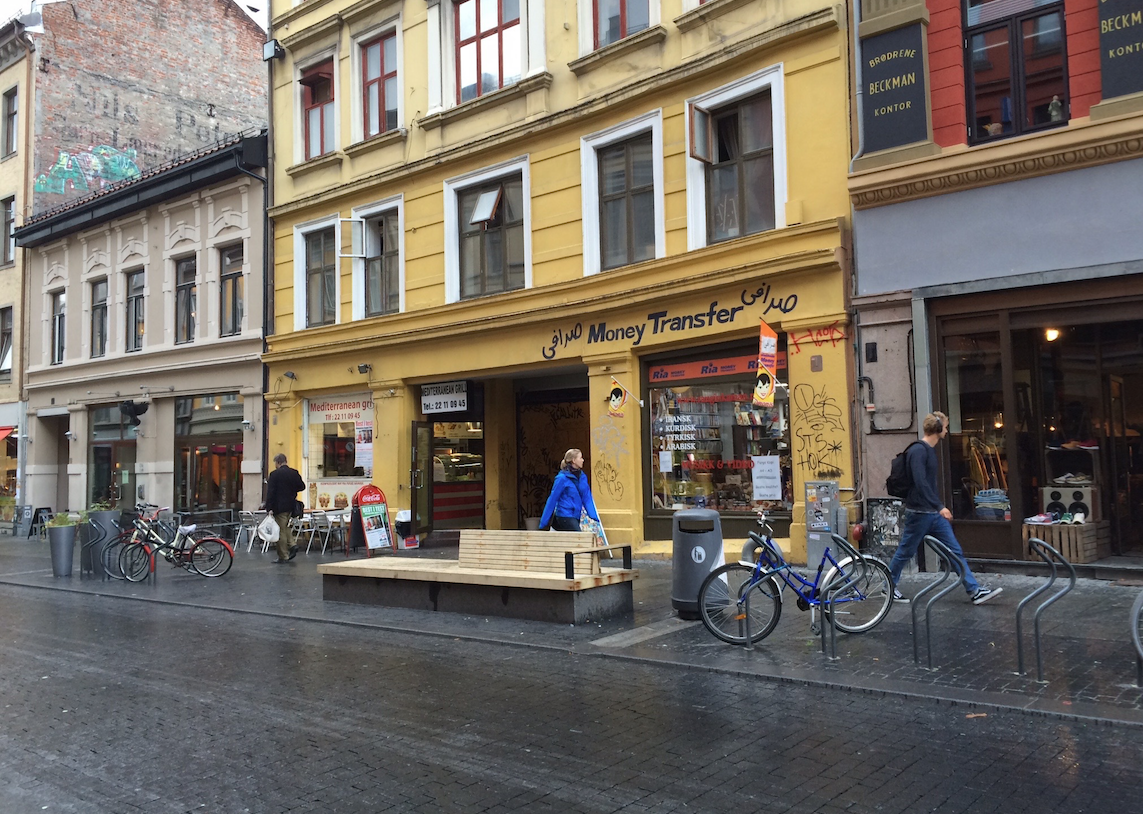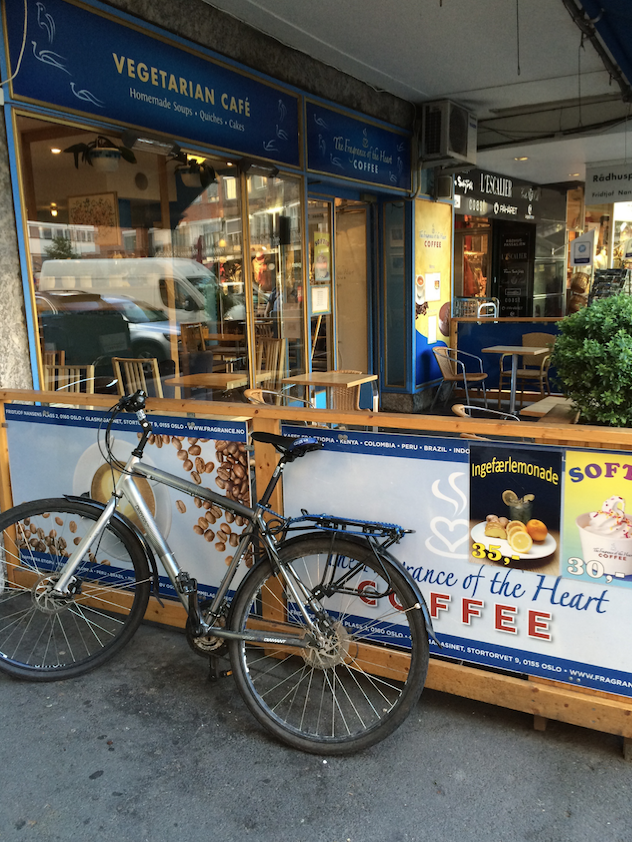
A Vegan in Norway: Food, Policy, and Public Attitudes (Part I)

Port in Oslo, Norway
Mia MacDonald traveled to Norway in October 2015 to visit the Nobel Peace Center in Oslo and to be a tourist This blog is the first in what will be a four-part series on her experiences and observations during the trip.
Oslo, Norway’s capital, has a reputation, which is deserved, for being expensive. When I visited the city 10 years ago, I recall eating a salad for lunch that cost about U.S.$25. It was very good, full of fresh field greens and raw vegetables. But the cost was about 2.5 times what it would have been in New York City, where I live and most often eat. So when I went back to Oslo in August, I planned to eat as little as I could and as cheaply. I was curious about whether veg*n cuisine had taken hold in Norway and how “veg-friendly” Oslo would be. I hoped I’d have more options to eat well and affordably than I’d had in 2004. I figured I wouldn’t eat a salad like that again, given the price!
To be fair, I’d eaten that salad at the café of the Grand Hotel, an Oslo landmark. The Grand is not only luxurious but also historic. It’s where Nobel peace laureates are lodged when they receive their prize each December 10th. American TV icon Oprah Winfrey stayed here when she hosted the Nobel peace prize concert in 2004 (which I attended). Norwegian writers and artists like Henrik Ibsen and Edvard Munch, used to eat lunch in the Grand Hotel’s café a century or so ago. (I learned at Oslo’s Ibsen Museum that, despite knowing many of his fellow diners in the café, Ibsen rarely spoke to any of them, including his friend the painter Munch.)
So before I left New York I did some research and was surprised and pleased to find a Vegan Oslo website that helpfully offered a Vegan Oslo app that I downloaded to my phone. My expectations, though, weren’t high. “Their diet is the worst,” a friend, not a Norwegian herself, told me. She recounted meals full of meat (lamb, mutton and “cured” meats like sausages) or fish (mainly salmon), potatoes and cheese, and with very few vegetables.
My friend’s perception showed up in the data. Norwegians eat relatively high levels of meat: 66 kilograms a year each (more than in China), along with a lot of cheese. They even outdo Americans. Each Norwegian ate an average of 18.1 kgs of cheese in 2013, while in the U.S. the total was 15.4 kgs each. And data from the UN Food and Agriculture Organization shows consumption of meat in Norway rising, at least through 2011.
In line with its small population of 5.1 million people, Norway has a relatively small livestock sector. But livestock are Norway’s main agricultural “product.” The sector’s shape, though, is changing. The number of cows in Norway fell by 16 percent between 2000 and 2010, to about 600,000. And the number of number of pigs and chickens rose a lot, as it is in many countries: the population of pigs grew by 16 percent, while the number of poultry (mainly chickens) leaped up by about 50 percent. Of course, like the rest of Europe and other developed countries, industrial animal agriculture exists in Norway.
Conditions tend to be more intensive – and worse overall – for pigs and chickens than they are for cows used for meat or dairy. At the same time and again, like people in other parts of Europe, animal welfare and “healthy food” rank high for Norwegians, according to a 2013 survey of agricultural policies. Reducing food prices was given much lower priority by those participating in the survey, and the use of GM (genetically modified) seeds wasn’t popular with Norwegians at all.
More recently, the National Institute for Consumer Research (SIFO) wanted to find out if Norwegians knew about the effects of livestock production on global greenhouse gas emissions, and if they cared enough to take action. Their survey found that to lower their “ecological footprint”, 51 percent of Norwegians had reduced electricity use. But a much smaller proportion,14 percent, said they’d eaten less meat. The researchers blame Norway’s media for giving very little attention to the environmental and climate change impacts of meat production and consumption. Norway’s politicians also don’t have a consistent position on the issue.
Plus, the SIFO observed, agricultural interests and environmentalists’ perspectives on meat vie with each other in the media, leaving many Norwegians “hoe-hum” or confused. That’s unfortunate. From another perspective, however, the SIFO survey results are encouraging. It means that almost 750,000 people in Norway are eating less meat on ecological grounds. How many countries would have 14 percent of their people doing this? It’s hard to think of any, apart from the United Kingdom.
 Brighter Green
Brighter Green







